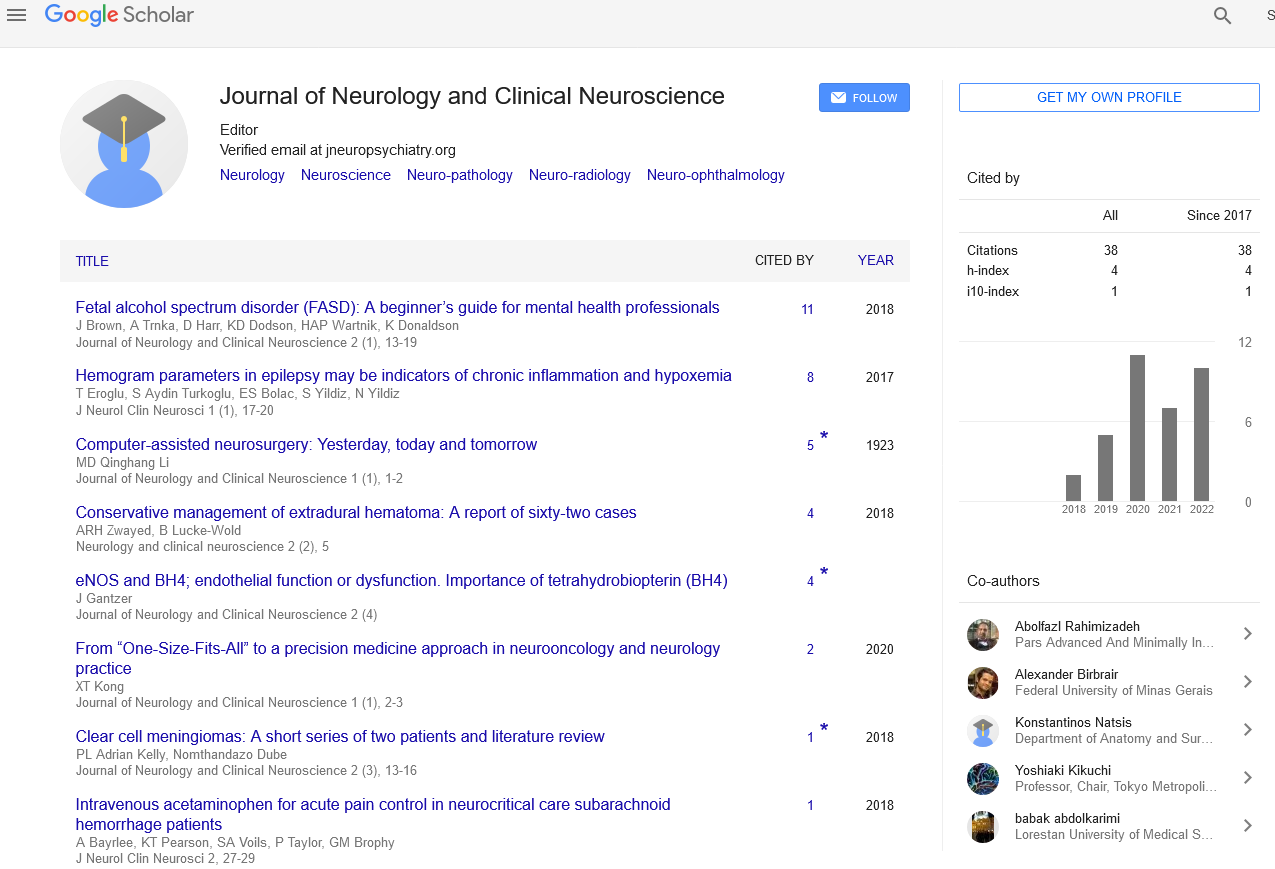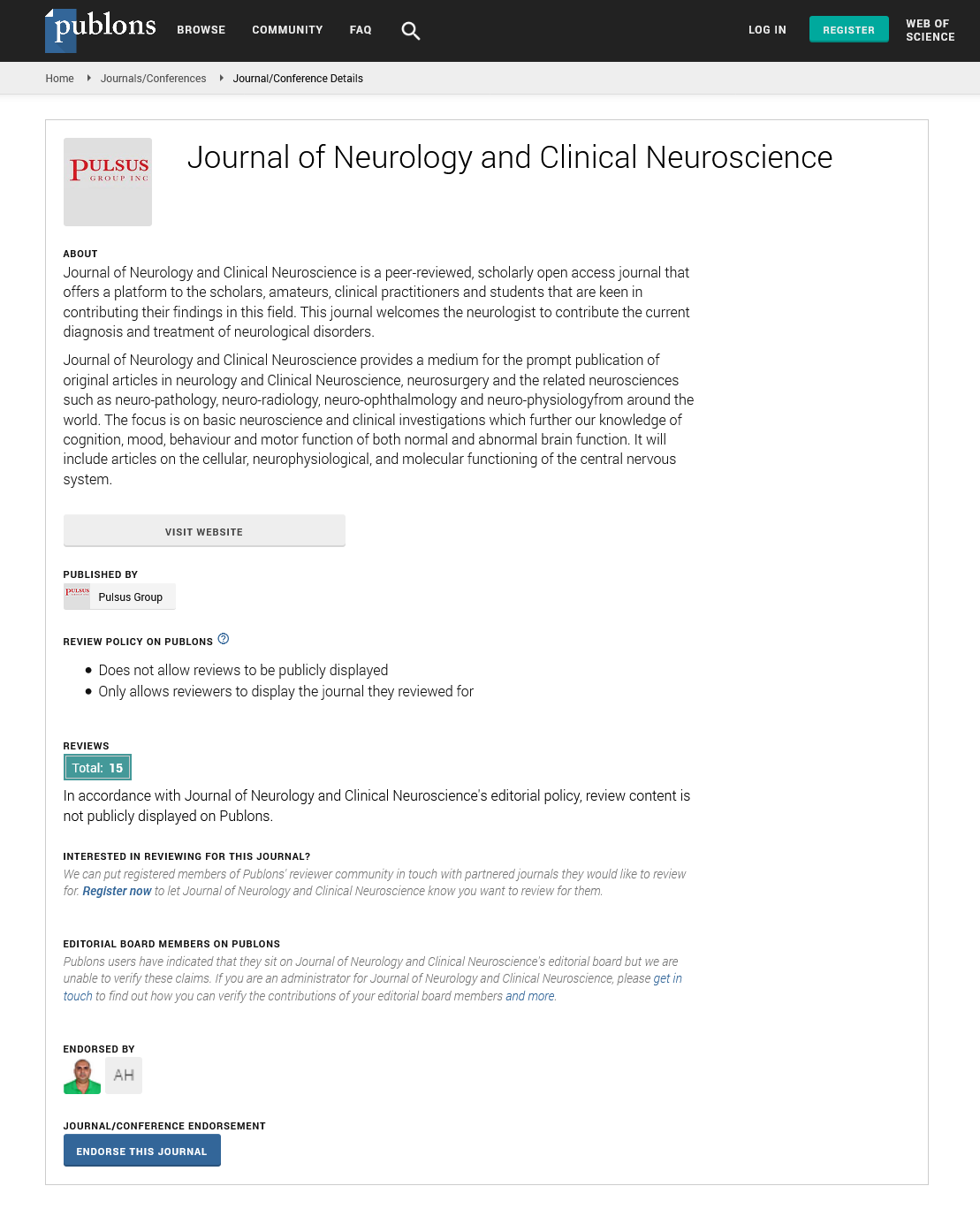Digital dementia, covid-19 & brain fog
2 Woman Medical Officer-WMO, Faisalabad, Pakistan
Received: 06-Jul-2021 Accepted Date: Jul 20, 2021; Published: 27-Jul-2021
This open-access article is distributed under the terms of the Creative Commons Attribution Non-Commercial License (CC BY-NC) (http://creativecommons.org/licenses/by-nc/4.0/), which permits reuse, distribution and reproduction of the article, provided that the original work is properly cited and the reuse is restricted to noncommercial purposes. For commercial reuse, contact reprints@pulsus.com
Abstract
Digital dementia is an ignored epidemic of 21st century, which is affecting our future generations. The wake of covid-19 and the increase dependence on technology has precipitated the effects of digital dementia epidemic with concurrent pandemic of Covid-19. Reported cases of Covid-19 exhibited neurological sign and symptoms which are generally combined in a term called ‘Covid-19 brain fog’. Unhealthy Life style, specifically the increased dependence on technology has led to cognitive dysfunction and consequential lowering of body’s ability to fight incoming agents like covid-19.There should be special focus on postural ergonomics, spine health & screen time monitoring for enhanced physical & brain fitness.
Keywords
COVID-19, Brain fog, Dementia, Technology, Mental health, Cognition, Digital dementia
Description
Technology is that element of our 21st Century which has embedded in our lives firmly. But with its introduction in our lives, the human mind and body has started to experience the hazards of its incorrect usage. In recent years the addictive usage of technology has led to dwindling of most important resource of human brain that is the cognitive function leading to the term ‘digital dementia’. Digital Dementia is an overlooked epidemic. “Digital Dementia” is an expression introduced by neuroscientist Manfred Spitzer to portray excess usage of digital technology consequential in the problem of cognitive ability [1].
A sensory imparity in the brain from amplified usage of technology and unnecessary slouch sitting postures, generating the cause of dementia. Primarily the spine health is deteriorated. The same spine is involved in the stimulus and nourishment of your brain. Spitzer proposed that short-term memory pathway will go under deterioration from under-utilization because of unrestrained usage of technology. The psychosomatic dismay within the brain roundabout by the term ‘dementia’ is far more fundamental and inclusive. Dormancy in memory process is far from being analogous to the extensive cognitive desolation that is dementia.
Investigators in recent time have examined how action video gamers and non-video gamers navigate a virtual puzzle maze, by means of one of two possible methods. The spatial tactic involved identification of the site of a range of landmarks inside the surroundings and psychologically constructing a plot of these areas and their spot comparative to each other [2]. The association of the striatum isn’t astonishing. It is identified that action video gaming is connected with larger mind capacity in the striatum [3]. Thus there is consequential reduction in hippocampal capacity. Preceding research has shown that abridged grey matter in the hippocampus is linked with an augmented hazard for post-traumatic stress disorder, depression, dementia and Schizophrenia [4].
The occipital lobe on the backside of the head processes illustration signals for instance image cue from a video game or television show. Although occupied with technology, the front division of the brain together with the frontal and parietal lobes are sluggish. Same area of brain is in charge for advanced order thinking and fine performance such as inspiration, aim setting, interpretation and scripting, recalling and publicly appropriate behaviors. Also responsible for movement and body position sense.
As the pandemic of COVID-19 emerged, it coupled up with ignored epidemic of digital dementia and increased technology usage with lockdown (work from home) in effect. COVID-19 led to a strange brain fog like condition in some affected patients. Among the major risk factors for this brain fog due to COVID-19 was the overlooked epidemic of digital dementia which caused deteriorated health of mind and body.
Physicians at Chicago medical center discovered that more than 40% of patients with COVID-19 show neurologic manifestation at the beginning [5]. COVID-19 can harm the brain. Various cases showed to be devastating such as strokes, encephalitis and shortage of oxygen to the brain. Even in some patients continual injury in sustained attention was noted by Chinese researchers [6].
A group of German and American Physicians culminated that the blending of unswerving effect of the virus, systemic inflammation, stroke, and injury to corporal organs (like lungs and liver) could even make COVID-19 survivors at an elevated risk for Alzheimer’s disease in the prospect [7].The majority of psychosomatic manifestation occurs near the beginning of the disease which may be forerunner for predicting upcoming clinical worsening [8].
Conclusion
The focal point is to shed light on the aspect of deteriorated mental health due to technology hazards and its effect of weakening the human brain, making it susceptible to cognitive dysfunction.
Posture is dilapidated with the momentum of technology. We should decrease screen time and amplify exercise and sports activities.
The outdoor activities help activate our sensory and motor cortex from movement and tactile sensation. The finest thing we can do is to make effort on our posture while we interact with technology. Postural ergonomics should be implemented. Overall it will help improve our immunity, bodily stress relief from poor posture and a constructive cognitive brain function.
REFERENCES
- M. Spitzer, Ulm. Digitale Demenz. Nervenheilkunde. 2012; 31(7):493.
- Konishi K, Bohbot VD. Spatial navigational strategies correlate with gray matter in the hippocampus of healthy older adults tested in a virtual maze. Front. Aging Neurosci. 2013;5(1).
- Kühn S, Romanowski A, Schilling C, et al. The neural basis of video gaming. Translational Psychiatry 2011; 1(11): e53.
- West GL, Drisdelle BL, Konishi K, et al. Habitual action video game playing is associated with caudate nucleus-dependent navigational strategies. Proceedings of the Royal Society. 2015; 282(1808).
- Liotta EM, Batra A, Clark JR, et al. Frequent neurologic manifestations and encephalopathy‐associated morbidity in COVID‐19 patients. Ann Clin Transl Neur. 2020; 73: 2221-2230.
- Zhou H, Lu S, Chen J, et al. The landscape of cognitive function in recovered COVID-19 patients. Journal of psychiatric research. 2020; 129(7): 98-102.
- Heneka M.T, Golenbock D, Latz E. et al. Immediate and long-term consequences of COVID-19 infections for the development of neurological disease. Alz Res Therapy. Neurology 2020; 12 (1):69.
- Whittaker A, Anson M, Harky A. The Monro Neurological Manifestations of COVID-19: A systematic review and current update. Neurology 2020; 142(1):14-22.





